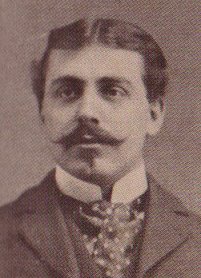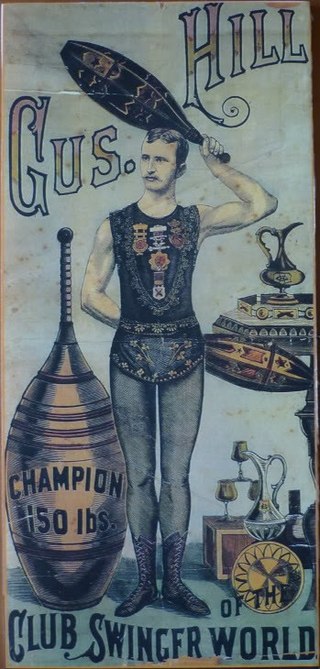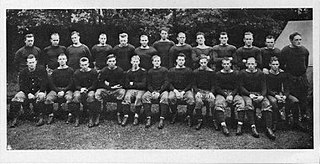Related Research Articles

The Keystone Cops are fictional, humorously incompetent policemen featured in silent film slapstick comedies produced by Mack Sennett for his Keystone Film Company between 1912 and 1917.

Harold Clayton Lloyd, Sr. was an American actor, comedian, and stunt performer who appeared in many silent comedy films.

Mutt and Jeff was a long-running and widely popular American newspaper comic strip created by cartoonist Bud Fisher in 1907 about "two mismatched tinhorns". It is commonly regarded as the first daily comic strip. The concept of a newspaper strip featuring recurring characters in multiple panels on a six-day-a-week schedule had previously been pioneered through the short-lived A. Piker Clerk by Clare Briggs, but it was Mutt and Jeff as the first successful daily comic strip that staked out the direction of the future trend.
Animated films in the United States date back to at least 1906 when Vitagraph released Humorous Phases of Funny Faces. Although early animations were rudimentary, they rapidly became more sophisticated with such classics as Gertie the Dinosaur in 1914, Felix the Cat, Oswald the Lucky Rabbit, and Koko the Clown.

Vital Achille Raoul Barré was a Canadian and American cartoonist, animator of the silent film era, and painter. Initially known as a political cartoonist, he originated the French Canadian comic strip, then crossed over into animated film and started his own studio, a pioneering effort. As a painter, he is considered an Impressionist, evoking atmosphere and light with visible, choppy strokes of paint, whose paintings are in the Musée national des beaux-arts du Québec.

Mexican cinema dates to the late nineteenth century during the rule of President Porfirio Díaz. Seeing a demonstration of short films in 1896, Díaz immediately saw the importance of documenting his presidency in order to present an ideal image of it. With the outbreak of the Mexican Revolution in 1910, Mexican and foreign makers of silent films seized the opportunity to document its leaders and events. From 1915 onward, Mexican cinema focused on narrative film.

We Faw Down is a silent short subject directed by Leo McCarey starring comedy duo Laurel and Hardy. It was released by Metro-Goldwyn-Mayer on December 29, 1928. It was remade in part with their film Sons of the Desert in 1933.

Harry Conway "Bud" Fisher was an American cartoonist who created Mutt and Jeff, the first successful daily comic strip in the United States.

Bud Duncan was an American actor of the silent era, most known for his early work with silent film comedian Lloyd Hamilton. He appeared in more than 160 films between 1912 and 1942.
The Sea Urchin is a 1913 American silent short romantic drama film directed by Edwin August and starring Jeanie MacPherson and Lon Chaney. The film was the earliest known character role by Lon Chaney and the first screenplay by MacPherson. The story follows a hunchback fisherman who finds a young girl and raises her into womanhood with the intention of marrying her. The film was released on August 22, 1913, and was played across the United States. The film is presumed lost.
The Centaur Film Company was an American motion picture production company founded in 1907 in Bayonne, New Jersey, by William and David Horsley. It was the first independent motion picture production company in the United States. In 1909 the company added a West Coast production unit, the Nestor Film Company, which established the first permanent film studio in Hollywood, California, in 1911. The company was absorbed by the Universal Film Manufacturing Company in 1912.

Aloma of the South Seas is a lost 1926 American silent comedy drama film starring Gilda Gray as an erotic dancer, filmed in Puerto Rico and Bermuda, and based on a 1925 play of the same title by John B. Hymer and LeRoy Clemens.

The Alloy Orchestra was a musical ensemble based in Cambridge, Massachusetts, United States. It performed its own accompaniments to silent films of the classic movie era on an unusual collection of found objects, homemade instruments, accordion, clarinet, musical saw, and a sampling synthesizer, the group scored and performed with 40 feature-length silent films or collections of shorts. The group is often credited with having helped revitalize the art of silent film accompaniment.

In 1916, Bud Fisher licensed the production of Mutt and Jeff for animation with pioneers Charles Bowers and Raoul Barré of the Barré Studio. This resulted in 292 animated Mutt and Jeff shorts, making it the longest-running theatrical animated short series of the silent era, second to Krazy Kat in terms of years. Series ran from 1916 to 1923 and 1925-1926. A few shorts of the second run were re-shot in 1934 by the Modern Film Sales Corporation with the Kromocolor process and reissued with sound effects and music tracks from the usage of the Brunswick Sound System. The following is a list of animated films in the series separated by years.

A Cure for Pokeritis is a 1912 short silent film starring John Bunny and Flora Finch. After Bunny's death in 1915, a re-release was announced with the alternative title A Sure Cure for Pokeritis. The film, a domestic comedy, depicts a woman who stops her husband's gambling habit by having her cousin stage a fake police raid on his weekly poker game. It was one of many similar shorts produced by Vitagraph Studios—one-reel comedies starring Bunny and Finch in a domestic setting, known popularly as "Bunnygraphs" or "Bunnyfinches"—whose popularity made Bunny and Finch early film stars. The film has been recognized as an historically important representative of its period and genre.
How Brown Saw the Baseball Game is an American short silent comedy film produced in 1907 and distributed by the Lubin Manufacturing Company. The film follows a baseball fan named Mr. Brown who drinks large quantities of alcohol before a baseball game and becomes so intoxicated that the game appears to him in reverse motion. During production, trick photography was used to achieve this effect.

Dog Gone is a silent animated short subject featuring Mutt and Jeff, the two title characters from Bud Fisher's comic strip. The cartoon is the eighth to last in the characters' long-running film series.

Gus Hill was an American vaudeville performer who juggled Indian clubs. He later became a burlesque and vaudeville entrepreneur. Hill was one of the founders of the Columbia Amusement Company, an association of burlesque shows and theaters, and became president of the American Burlesque Association. He also staged drama and musical comedies. He launched a highly popular series of "cartoon theatricals", musical comedies based on comic strips or cartoons. At one time he was running fourteen different shows.

The 1913 Pittsburgh Panthers football team was an American football team that represented the University of Pittsburgh as an independent during the 1913 college football season. In its first season under head coach Joseph Duff, the team compiled a 6–2–1 record and outscored all opponents by a total of 165 to 46.

Women's suffrage, the legal right of women to vote, has been depicted in film in a variety of ways since the invention of narrative film in the late nineteenth century. Some early films satirized and mocked suffragists and Suffragettes as "unwomanly" "man-haters," or sensationalized documentary footage. Suffragists countered these depictions by releasing narrative films and newsreels that argued for their cause. After women won the vote in countries with a national cinema, women's suffrage became a historical event depicted in both fiction and nonfiction films.
References
- ↑ Eileen Bowser. The Transformation of Cinema 1907-1915. Charles Scribner's Sons. 1990. p. 144. ISBN 0-684-18414-1.
- ↑ Anthony Balducci. Lloyd Hamilton: Poor Boy Comedian of Silent Cinema. McFarland. 2009. p. 19. ISBN 0-7864-4159-3.
- ↑ "kioscopedia.com - kioscopedia Resources and Information". www.kioscopedia.com.
- ↑ "Image 3 of The leader-enterprise (Fitzgerald, Ga.), September 15, 1913, (Monday Edition)". Library of Congress, Washington, D.C. 20540 USA. Retrieved 2023-10-23.